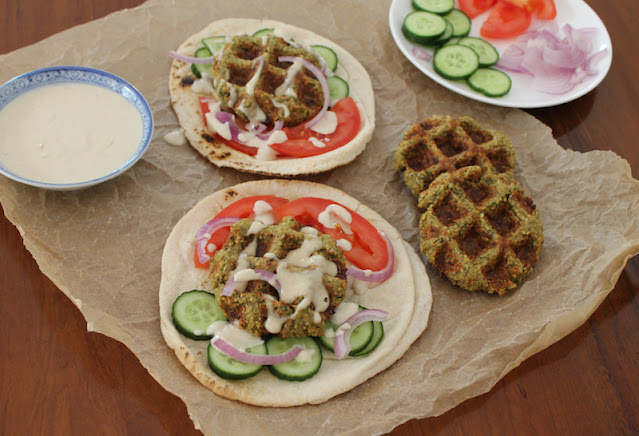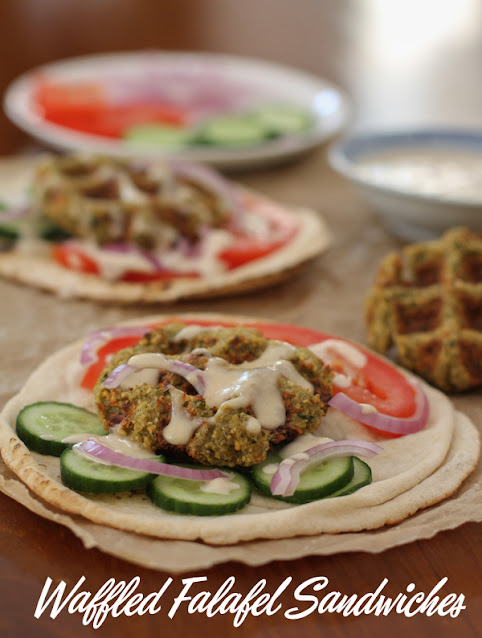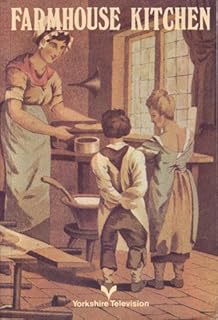We were living in Sydney almost 30 years ago when my husband came home from work one day with the news that he had been offered a transfer to Abu Dhabi. What did I think?
We had been in Australia for a number of months on a temporary project, and I had resigned from my dream job to follow along. The friendly yet unaccommodating folks at Australian immigration had stamped my passport Employment Prohibited and, because of strict quarantine laws, we had left our furry son in the care of friends.
My first question was, can I work there? The second was, can we import the dog? When the answers were yes and yes, we looked the United Arab Emirates up on the map and made our decision.
Abu Dhabi in the 1980s was a special place, a city that felt like a small town. The only fast food joints were Kentucky Fried Chicken – where the only choice was original recipe – and the small, family run shawarma and falafel places. After a busy day at the office, we’d stop by and order shawarma sandwiches to go.
Abu Dhabi in the 1980s was a special place, a city that felt like a small town. The only fast food joints were Kentucky Fried Chicken – where the only choice was original recipe – and the small, family run shawarma and falafel places. After a busy day at the office, we’d stop by and order shawarma sandwiches to go.
The falafel guy sat on the sidewalk just outside the small café, his enormous pot of boiling hot oil heated by a gas burner, much like the ones we use in the US to heat water for boiling crawfish and crabs. As we waited for our wrapped sandwiches, he’d hand us each a freshly fried falafel in a bit of paper, compliments of the house. They reminded me of southern hush puppies. Crispy on the outside, fluffy on the inside. In a word, just perfect.
When we left the Middle East for Southeast Asia a couple of years later, I pined for the falafel guy. Eventually I got over him, but I’ve never forgotten how a real, freshly cooked falafel should taste.
Sure, you can buy falafel mixes at the grocery store, but homemade falafels are super easy and so much more tasty. You control the salt and spices and all the ingredients are wholesome and good for you. The only downside of falafels, healthy-wise, it that they are fried. I know, I know, some people say you can bake them, but I’ll be honest, if I’ve managed to get them crunchy on the outside, the inside is often dried out.
When we left the Middle East for Southeast Asia a couple of years later, I pined for the falafel guy. Eventually I got over him, but I’ve never forgotten how a real, freshly cooked falafel should taste.
Sure, you can buy falafel mixes at the grocery store, but homemade falafels are super easy and so much more tasty. You control the salt and spices and all the ingredients are wholesome and good for you. The only downside of falafels, healthy-wise, it that they are fried. I know, I know, some people say you can bake them, but I’ll be honest, if I’ve managed to get them crunchy on the outside, the inside is often dried out.
Waffle iron to the rescue!
Homemade falafels are as quick to put together as the mixes but just require a little advance planning since the chickpeas need to be soaked first overnight. Some cookbook writers will tell you that you can use canned chickpeas – I’m looking at you, Nigel Slater. And don’t even get me started on Jamie Oliver who serves his canned bean falafels in wholewheat tortillas. – but don’t listen to them.Waffled Falafel Sandwiches
Using raw soaked chickpeas is not only more authentic but the traditional recipe is the best because the resulting falafels taste right and have the right texture. Trust me.
Ingredients
For the falafels:
1 1/2 cups or 285g dried chickpeas, soaked overnight in cool water
1 small onion, (about 100g roughly chopped)
1/4 cup, packed, or 13g chopped fresh parsley
1/4 cup, packed, or 13g chopped cilantro
3 cloves garlic
1 3/4 teaspoons salt
2 teaspoons cumin
1 teaspoon ground coriander
1/2 teaspoon cayenne pepper
1/4 teaspoon black pepper
1 egg
1 tablespoon vegetable oil for your waffle iron – oils with a high flash point are best. I use peanut oil.
For the tahini sauce:
1/2 cup tahini sesame seed paste
1/3 cup lukewarm water, or more for consistency
1 clove raw garlic
2 tablespoons fresh lemon juice (or more to taste)
Good pinch salt (or more to taste)
To assemble the sandwiches:
Arabic or Lebanese flatbread or pita
Tahini sauce
Sliced tomatoes
Sliced onions
Sliced cucumbers
Method
Cover your dried chickpeas with ample cool water and leave them to soak overnight or even as much as 24 hours. Drain your chickpeas.
Put the soaked, raw chickpeas in a food processor and pulse a few times until the chickpeas look like big crumbles. It should still be very loose and dry. Add in the onions and herbs and seasoning and pulse until quite fine. Use a spatula to scrape down the sides a couple of times.
Add in the egg and pulse until you have a fairly smooth paste where little bitty bits of chickpea are still visible. Scrape down the sides of the processor as you do.
Transfer the paste into a clean bowl and cover well with cling film. Refrigerate for half an hour.
Preheat your Belgian waffle iron. That’s the kind with the deep squares that makes thick waffles.
Use a spoon to scoop our about on one tenth of your paste. It should fit comfortably in the palm of your hand. Form it into a patty of even thickness.
Lightly oil the waffle iron with using a pasty brush and place the patty in it. Make more patties and add them to the waffle iron as well.
Some Belgian waffle irons have four squares. Some, like mine, have only two. Close the lid and let gravity determine how it falls. Do not push down on the lid.
Cook until the light on your waffle iron says "ready" then leave them in for about another minute or so to ensure that the outsides are lovely and crispy.
Keep the waffled falafels warm in a slow oven until all are cooked and you are ready to serve.
Slice up your tomato, cucumber and onion.
To assemble the sandwiches, put a few slices of tomato and cucumber on the flatbread. Top with the falafel, drizzle on the tahini sauce and sprinkle with the sliced onions.
Enjoy!
I love creative waffles, don't you?
Here are a few I've loved and make sure to scroll down to see a great list of others from my Sunday Supper group.
Loaded Baked Potato Waffles with potatoes, cheddar, green onion, sour cream and, of course, bacon!
Guess what? June 29th is National Waffle Iron Day! Who knew, right? My Sunday Supper group is celebrating by bringing you a plethora of wondeful waffle recipes, both sweet and savory. Many thanks to Sue of Palatable Pastime, our host for this tasty event, as well as Renee of Renee’s Kitchen Adventures, our campaign manager.
Ingredients
For the falafels:
1 1/2 cups or 285g dried chickpeas, soaked overnight in cool water
1 small onion, (about 100g roughly chopped)
1/4 cup, packed, or 13g chopped fresh parsley
1/4 cup, packed, or 13g chopped cilantro
3 cloves garlic
1 3/4 teaspoons salt
2 teaspoons cumin
1 teaspoon ground coriander
1/2 teaspoon cayenne pepper
1/4 teaspoon black pepper
1 egg
1 tablespoon vegetable oil for your waffle iron – oils with a high flash point are best. I use peanut oil.
For the tahini sauce:
1/2 cup tahini sesame seed paste
1/3 cup lukewarm water, or more for consistency
1 clove raw garlic
2 tablespoons fresh lemon juice (or more to taste)
Good pinch salt (or more to taste)
To assemble the sandwiches:
Arabic or Lebanese flatbread or pita
Tahini sauce
Sliced tomatoes
Sliced onions
Sliced cucumbers
Method
Cover your dried chickpeas with ample cool water and leave them to soak overnight or even as much as 24 hours. Drain your chickpeas.
Put the soaked, raw chickpeas in a food processor and pulse a few times until the chickpeas look like big crumbles. It should still be very loose and dry. Add in the onions and herbs and seasoning and pulse until quite fine. Use a spatula to scrape down the sides a couple of times.
Add in the egg and pulse until you have a fairly smooth paste where little bitty bits of chickpea are still visible. Scrape down the sides of the processor as you do.
Transfer the paste into a clean bowl and cover well with cling film. Refrigerate for half an hour.
Preheat your Belgian waffle iron. That’s the kind with the deep squares that makes thick waffles.
Use a spoon to scoop our about on one tenth of your paste. It should fit comfortably in the palm of your hand. Form it into a patty of even thickness.
Lightly oil the waffle iron with using a pasty brush and place the patty in it. Make more patties and add them to the waffle iron as well.
Some Belgian waffle irons have four squares. Some, like mine, have only two. Close the lid and let gravity determine how it falls. Do not push down on the lid.
Cook until the light on your waffle iron says "ready" then leave them in for about another minute or so to ensure that the outsides are lovely and crispy.
Keep the waffled falafels warm in a slow oven until all are cooked and you are ready to serve.
To make the tahini sauce
Crush the garlic clove with a garlic press or with the side of a knife. Add it to a small bowl with the lemon juice and good pinch of salt. Whisk in the tahini paste then add the water, whisking well until you achieve the consistency you want.Slice up your tomato, cucumber and onion.
To assemble the sandwiches, put a few slices of tomato and cucumber on the flatbread. Top with the falafel, drizzle on the tahini sauce and sprinkle with the sliced onions.
Enjoy!
I love creative waffles, don't you?
Here are a few I've loved and make sure to scroll down to see a great list of others from my Sunday Supper group.
Cheesy Ham Waffles made with smoky ham and lots of cheese in a buttermilk waffle batter.
Cauliflower Cheese Waffles with steamed cauliflower, loads of cheese and a little English mustard.
Loaded Baked Potato Waffles with potatoes, cheddar, green onion, sour cream and, of course, bacon!
Guess what? June 29th is National Waffle Iron Day! Who knew, right? My Sunday Supper group is celebrating by bringing you a plethora of wondeful waffle recipes, both sweet and savory. Many thanks to Sue of Palatable Pastime, our host for this tasty event, as well as Renee of Renee’s Kitchen Adventures, our campaign manager.
Sweet and Sinful Waffles
- Banana Split Waffle Cake by The Bitter Side of Sweet
- Blueberry Buttermilk Waffles by Alida's Kitchen
- Boston Cream Pie Waffles by Crazed Mom
- Chocolate Cherry Beet Waffles by Sew You Think You Can Cook
- Chocolate Chip Waffle Ice Cream Sandwiches by Turnips 2 Tangerines
- Chocolate Pizelles – The Italian Waffle by GirlAbroad
- Churro Waffles by The Redhead Baker
- Coconut Waffles by Omnivore’s Cookbook
- Dark Chocolate Waffles with Cherry Syrup by The Chef Next Door
- Easy Peasy Blueberry Sauce for Waffles by Pine Needles In My Salad
- Fluffernutter Waffles by Cindy’s Recipes and Writings
- Irish Cream Waffles with Whiskey Strawberries by Tramplingrose
- Japanese Green Tea Matcha Cream Topped Vegan Waffles by NinjaBaker
- Maple Bacon Waffle Ice Cream Cake by Dizzy Busy and Hungry
- Pineapple Upside Down Cake Waffles by Cookin’ Mimi
- Red, White and Blueberry Sourdough Waffles by Cooking With Carlee
- S’Mores Waffles by The Freshman Cook
- Spiced Banana Nut Waffles by Magnolia Days
- Strawberry Shortcake Waffles with Cinnamon Whipped Cream by Hezzi-D’s Books and Cooks
- Strawberry Waffle Cake by That Skinny Chick Can Bake
- Waffle Kebobs with Maple Yogurt Dipping Sauce by A Mind Full Mom
- Yeasted Waffles with Peach Syrup by Pies and Plots
Savory Brinner Winners:
- Asiago Waffle Egg Sandwiches by Grumpy’s Honeybunch
- Bacon Cheeseburger Waffles (Low Carb) by My Life Cookbook
- Bacon Waffles by Cosmopolitan Cornbread
- Biscuit Waffle Breakfast Stacks by The Weekend Gourmet
- Bleu Pig Potato Waffles by Culinary Adventures with Camilla
- Breakfast Poutine Waffles by She Loves Biscotti
- Cheesy Bacon Waffles with Spicy Ketchup by Momma’s Meals
- Cheesy Polenta Waffles by Cupcakes and Kale Chips
- Cheesy Spinach Waffles with Ham by Wholistic Woman
- Chicken & Waffles by Family Around the Table
- Corn Waffles Nachos-Style by Caroline’s Cooking
- Croque Monsieur Waffles by Un Assaggio of Food, Wine & Marriage
- Eggs Benedict Cauliflower Waffles by Life Tastes Good
- Korean Fried Chicken and Ramen Waffles by kimchi MOM
- Loaded Gluten Free Cornbread Waffles by Angels Home Sweet Homestead
- Luau Egg Benedict Waffle by Brunch-n-Bites
- Mexican Cornbread Waffles by Sunday Supper Movement
- Monte Cristo Waffle Sandwich by Palatable Pastime
- Pulled Pork Waffle Tacos by The Crumby Cupcake
- Pumpkin Cornbread Waffles with BBQ Chicken Thighs by Our Good Life
- Scallion Waffles by A Kitchen Hoor’s Adventures
- Sweet and Spicy Pecan Shredded Beef Waffles by Family Foodie
- Waffled Falafel Sandwiches by Food Lust People Love





































